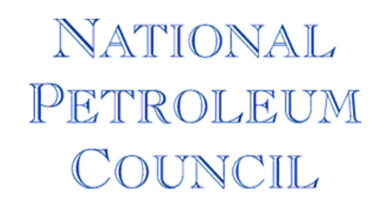Well classification system under development at recently formed IADC Geothermal Committee
Group also aims to foster industry discussion, collaboration as IADC works to hold its first Geothermal Conference in 2025
By Stephen Whitfield, Senior Editor
As drilling contractors continue to learn about and help to scale geothermal drilling, IADC is looking to facilitate that process. The IADC Geothermal Committee was established in November 2023, with an aim to provide resources that can help members advance the geothermal sector.
“The value proposition for geothermal is definitely there,” said Scott Farmer, Well Engineering Manager at Helmerich & Payne (H&P) and Chairman of the Geothermal Committee. “While it’s not exactly like traditional oil and gas, we have a lot of people in this industry who are very passionate about geothermal. There are a lot of companies waiting in the wings, keeping an eye on what’s going on.”
The committee was spawned out of an energy transition panel at the 2022 IADC World Drilling Conference in Paris. That led to the idea that a forum should be created for drilling contractors who are interested in geothermal, which then led to the formation of an IADC geothermal workgroup in late 2022. The group worked to formally assess member interest and evaluate what would be the purpose and deliverables of a Geothermal Committee, said Lars Nydahl Jorgensen, Regional Director Europe at IADC.
“We sent out e-mails to drilling contractors and service companies that are engaged in geothermal, and very soon we had several companies saying we needed to do something,” Mr Jorgensen said.
One of the first gaps the workgroup identified was the lack of industry guidelines around the drilling of geothermal wells. “One of the biggest things we heard from all the different people we talked to is that each country has different rules governing geothermal, which slows development,” Mr Farmer said. “We need to have some kind of standardized, international guidelines that we can point to that show – both to the industry and policymakers – that this is how we should drill these types of wells. We need to cut that red tape when it comes to rig specifications and equipment.”
Since the Geothermal Committee was established in November, members have been working on a well classification system that “reflects the practicalities of putting a hole in the ground,” as well as the risk and difficulty associated with the initial construction and long-term operation of a geothermal well. This classification is a precursor to a dedicated guideline on geothermal wells.

An initial draft hierarchy of seven classes has been outlined:
- Reservoir dependency: This reflects the difference between conventional and unconventional geothermal wells, identifying the geological risks for developing the resource.
- Well purpose: This outlines why the well is being drilled. So far, the committee has identified three subclasses: mineral extraction, direct power generation and heat production.
- Design and operation: This covers specific codes encompassing the design, construction, pressure and chemical environment of a geothermal well.
- Rig hookload: This highlights the rig size and power required to deliver the well.
- Well control: The guideline will provide well control standards depending on the type of risk likely to be encountered in drilling the well. For “conventional” wells, the well control risk would be similar to that of a conventional oil and gas well, while “unconventional” wells may have a heightened risk of geothermal-specific issues such as a steam blowout. The types of toxic gases likely to be encountered will also be considered.
- Drilling difficulty: This class is a byproduct of the lithology and the directional difficulty index.
- Environmental impact: This will highlight the environment in which the well will be drilled, making a clear distinction between urban and rural/industrial environments.
While the committee has mostly settled on the “reservoir dependency” and “well purpose” classes and subclasses, Mr Farmer said significant work is still needed before finalizing the guideline, and the other classes are likely to see changes.
In particular, he said the committee is discussing whether the classification should consider the difference in temperature and pressure envelopes during the well’s construction and its operation.
“The reason we’re concerned, especially with temperature, is that we’re worried about the downhole tools’ ratings,” he said. “Are you going to use standard high-temperature tools that can handle about 150°C? On the other hand, when you’re operating the well, we’re more worried about the long-term integrity of the casing. Do we need to be worried about the casing derating under high-temperature loads?”
Mr Farmer continued: “Providing the different envelopes allows different mitigations to be identified, such as thermally insulated drill pipe and continuous circulating units to reduce downhole temperatures during drilling. Those are the two ideas that we want to capture, and we’ve debated a lot on whether we should just account for one bottomhole temperature or is it more complex?”
The committee aims to deliver a final draft version of the classification by the end of Q3 this year for industry comments and to publish the classification in Q4. This will launch the wider body of work required for the guideline – which will be included in the IADC Drilling Manual.
Beyond the guideline, IADC will also aim to provide forums for greater discussion on geothermal issues, including holding the first IADC Geothermal Conference, which is currently planned to be held in March 2025 in Vienna.
“Who knows where geothermal development will be in a year, but I think a lot of the companies we’ve been seeing at geothermal presentations at other conferences should be there,” Mr Farmer said. “With the international nature of geothermal development, all of these companies in different regions and all these different challenges that you see from place to place, having that sort of forum for that kind of discussion will be pretty critical. It will be great to have a conference from IADC that’s solely devoted to this topic.” DC



